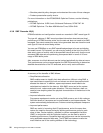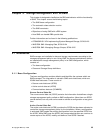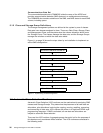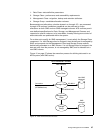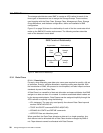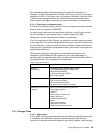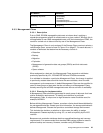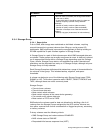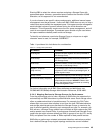
Storage Management with DFSMS 39
User defined allocations take precedence over default Data Classes. For
example, if a Data Class specifies an LRECL of 80 bytes, and the JCL allocation
specifies an LRECL of 100 bytes, then 100 bytes are allocated. If the Data Class
is altered by the storage administrator, attributes previously allocated by the
Class remains unchanged. Alterations are only be honored for new allocations.
5.3.1.2 Planning for Implementation
To identify and reference a particular Data Class, a unique one to eight character
name is used, for example, DCDBKSDS.
For each group of data sets that have similar attributes, a Data Class can exist,
but is not mandatory. An example where it could be used is with DB2
tablespaces, as they have identical allocation characteristics.
Prior to the definition of Data Classes, an analysis of common data types needs
to be undertaken. This should include deciding whether to use ACS routines only
for their allocation, or allow users (in this case, the DBA) to assign them as well.
There may be a requirement to standardize naming conventions, and agree upon
default space allocations.
Attributes include many of the data set characteristics specified on JCL
statements, and IDCAMS DEFINE commands. Only those applicable to a
particular data set type should be coded, all others should be left blank. Table 8
on page 39 shows a list of attributes for consideration.
Table 8. Data Class Attributes
5.3.2 Storage Class
5.3.2.1 Description
Prior to SMS, critical and important data sets that required improved performance
or availability were allocated to specific volumes manually. Data sets that
required low response times were placed on low activity volumes, where caching
ATTRIBUTE COMMENT
Data set
Organization
- VSAM type (KSDS, ESDS, RRDS or LINR)
- Non VSAM type (Sequential, partitioned)
- Record format (RECFM)
- Logical record length (LRECL)
- Key Length (VSAM)
Space requirements - Average record length value
- Size of primary allocation
- Size of secondary allocation
- Number of directory blocks, if a library
VSAM, data and volume
specifics
- Size of Control Interval and Control Area
- Percentage freespace
- Replicate
- Imbed
- Share options—volume count
- Backup while open
- Extended addressability
- Reuse
- Space constraint relief
- Spanned/non spanned
- Initial load (speed and recovery)




